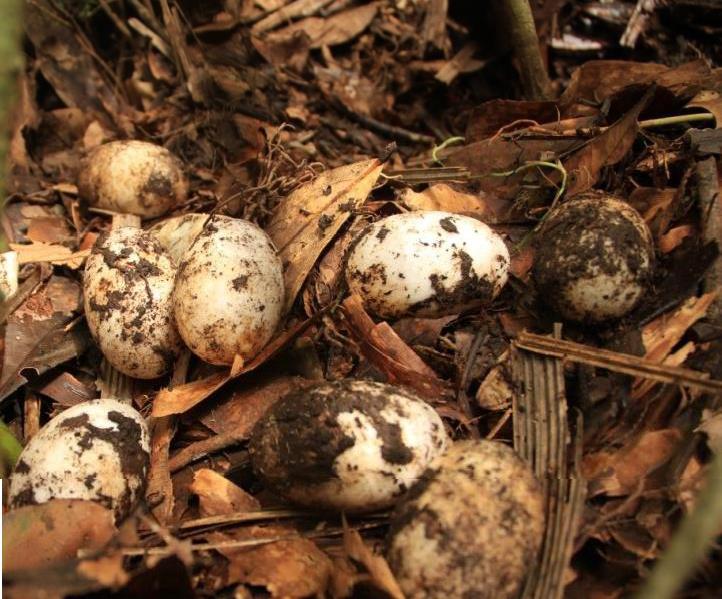Carlos Eduardo Valeris Chacín
The aims of this project are to evaluate the population status, distribution, movements, reproduction and hunting pressure of Schneider’s Smooth-fronted caiman (Paleosuchus trigonatus) in the Erebato river basin, to generate a conservation and management guidelines with the indigenous communities.

Huevos fértiles de P. trigonatus. Se observa cubierta de barro de termitas en algunos de los huevos. © Raquel Kassalian, 2013.
The project began with the participation of Ye’kwana and Sanema communities in workshops to elucidate the perception of the community members about the game fauna. Their conclusions’ indicated that Schneider´s Smooth-fronted caiman population are threat due a high hunting pressure surround communities. For that, is necessary to evaluate the status of this caiman populations, near and far away communities to measure the impact of this activity, and promote the construction of a conservation and management plan in the biggest communities of Erebato river basin.
At an ecological level, we look to know: what is the population status of caimans in areas with and without hunting activities? How is the spatial distribution of caimans in the river basin? What is the size of home range for adult males, females, and juveniles? Where are the reproductive areas? And what are the nests and eggs characteristics? To answers this questions we will carry out night counts in creeks and rivers in three main areas: in places with and without hunting pressure. Day assessment will include forest small stream to look for nest, juveniles and adults. Four satellite tracking equipment will be placed on three adult females and one male, to determine the home range and movements patterns.
For management and conservation plan we will work close with four (4) communities (Ye’kwana and Sanema) in the high and middle Erebato river basin, to systematically evaluate: how many caimans are hunts, the places, and the biological information of each specimen: size, sex and reproductive condition. Once we get this information, we will discuss the results with each community to promote (according with their culture and hunting pressure) the basic guideline to begin a conservation and management action plan.
Additionally, we’ll publish a booklet for students and kids with the basic ecological and cultural importance of this crocodile specie in other to contribute with environment education and conservation.